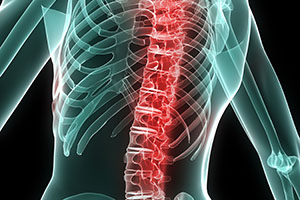Health Blog
Exercise and education program improves quality of life after surgery

Physical therapy and exercise may play important role in recovery process
Lumbar microdiscectomy is a type of surgical procedure used to treat patients with back problems like herniated discs and is one of the most common surgeries performed in the U.S. Following surgery, many patients experience pain and disability, which can negatively affect their health and quality of life (QoL). Physical therapy and exercise have been shown to improve QoL in patients with low back pain and may be capable of leading to similar changes for patients after surgery, but evidence is lacking to support this. Therefore, a powerful study called a randomized-controlled trial (RCT) was conducted to evaluate the impact of physical therapist-instructed exercises on patients after lumbar microdiscectomy.
Patients receive either education alone or along with exercise
Patients scheduled to have a lumbar microdiscectomy for the first time were asked to participate and screened for eligibility. A total of 77 patients were included in the RCT and randomly assigned to either the education only or education and exercise group. The education was a one-hour session that took place 4-6 weeks after surgery in which the therapist helped patients understand their back problems and how to care for it. The exercise program consisted of strength and endurance training for the back, trunk and lower extremities. It began a few days after the education session and occurred three times a week for 12 weeks and progressed based on each patient's abilities. All patients were assessed using a survey called the Short Form 36 (SF-36), which measures QoL, before and after each intervention.
Exercise helps patients achieve greater overall improvements
When compared to the education only group, results showed that patients in the exercise and education program experienced greater improvements in the SF-36. This was based on improved scores in the scales of physical function, and physical and bodily pain, which together are reported to be the best scales for measuring physical health. These findings suggest that an intense 12-week strength and endurance-training program can lead to significant benefits in physical function and overall QoL for patients following lumbar microdiscectomy. Doctors should therefore consider utilizing such a program, as administered by a physical therapist, in the rehabilitation process after surgery to help ensure optimal physical and mental recovery.
-As reported in the September'14 issue of Clinical Rehabilitation
April 30, 2015
Back to Health BlogHEALTH BLOG
- Exercise Therapy May Provide Relief for Chemotherapy-Related Issues
- Unlocking Relief From Elbow Pain With Hands-On Therapy and Exercise
- Are Deep Squats Really as Bad as We Think?
- Reclaiming Your Grip: The Power of Hands-On Therapy for Tennis Elbow
- Runners Can Overcome a Common Knee Condition With Physical Therapy
- How Physical Therapy Can Help Older Adults Stay on Their Feet
- What You Need to Know About Alcohol and Heart Health
- Exercise Therapy Provides Strong Evidence of Its Effectiveness
- Strength in Age: The Power of Resistance Training for Older Adults
- Hip Strength and Groin Pain: What Athletes Need to Know
RECENT ARTICLES

- 11 Possible Reasons Your Back HurtsJune 22, 2020

- What Conditions Can a Chiropractor Treat?May 25, 2020

- A Simple Guide to Better PostureApril 30, 2020

- Is Acupuncture Right for Me When I’m Afraid of Needles?March 30, 2020

- Stretching Done Right — How and When to StretchFebruary 26, 2020

